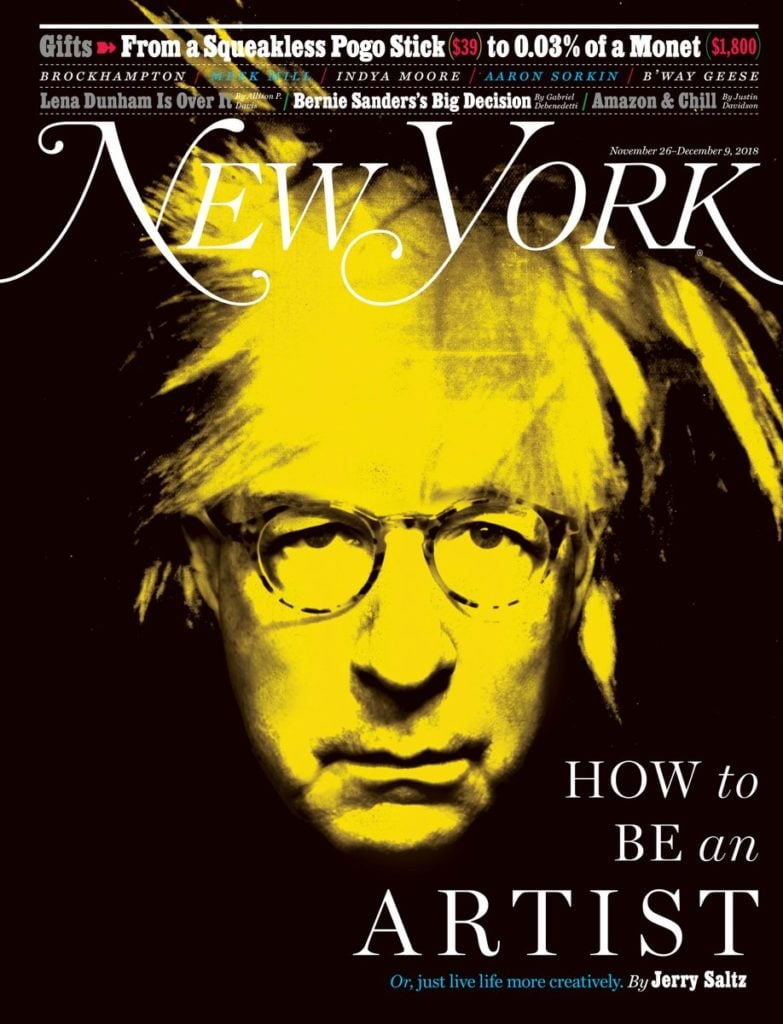People
Pulitzer Prize-Winning Art Critic (and Failed Artist) Jerry Saltz Is Writing a Book on How to Be an Artist
The critic is expanding an essay he first published in November 2018 for New York magazine.

The critic is expanding an essay he first published in November 2018 for New York magazine.

Caroline Goldstein

If you are one of the 350,000 followers who wait, trigger-finger poised, to “like” the latest one-liner delivered by the colorful and outspoken art critic Jerry Saltz, you’re in luck.
The New York magazine critic and recent Pulitzer Prize winner announced today (via social media, naturally) that he is writing a new book called How to Be an Artist, based on an essay of the same name that he penned as a cover story for New York last fall. (He also posed as the magazine’s cover star, adopting the guises of artists Frida Kahlo, Andy Warhol, and Salvador Dalí.)
The book will be published by Riverhead, an imprint of Penguin Random House, as part of a two-book deal with Saltz, according to Publishers Marketplace. It is due to hit shelves on March 3, 2020.
Saltz’s original essay outlined 33 rules for being an artist (or at least, living more creatively) and featured pithy lines that fall somewhere between inspirational life coach and stern-aunt straight talk. Sample pearls of wisdom include “start with a pencil,” “accept that you will likely be poor,” and “art is a form of knowing yourself.”
I'm incredibly excited to announce @riverheadbooks will be publishing my book HOW TO BE AN ARTIST – an expansion of the article I wrote for @NYMAG last December. The book will be out March 2020 and filled with lots of new tips, admonitions & more for pursuing a creative life. xo pic.twitter.com/tX91BRfYWx
— Jerry Saltz (@jerrysaltz) March 11, 2019
In an email to artnet News, Saltz insists that his advice should be taken “not as prescription but as constellations of ideas and observations.”
Saltz worked as a long-haul truck driver and artist before becoming a full-time critic. (He wrote about his life as a failed artist in an award-winning essay for New York.) He has often spoken about his admiration of fellow critics who are “of the people” and unconcerned with the cloistered, hermetic world of academic art criticism, citing Sister Wendy Beckett, Bob Ross, and Mr. Rogers as major influences on his writing style. We can expect more of this “people’s critic” approach in his forthcoming books.
“I wasn’t trained in art so I know what it is to feel as if I don’t ‘know,'” Saltz told artnet News. “I know that I still don’t know what ‘a Matisse’ means. But I might be able to record—like a demented Geiger counter—scores of possible thoughts one might have in front of a Matisse.”